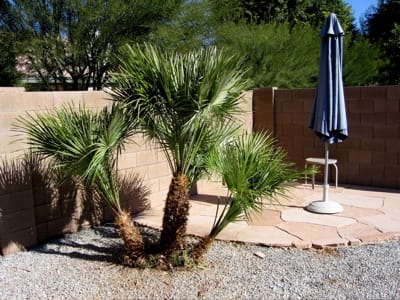Horticulture is often a lifelong passion, but if you do a little research, it doesn’t end up seeming so hard. Now you know what you need to do, you are more informed about horticulture, so you can hone your skills and turn into a wonderful gardener.
You don’t need store-bought chemical solution to deal with powdery mildew in your garden.Mix a little liquid soap and some baking soda in water. Spray this on the plants once per week or until that mildew goes away. This mixture will not hurt your plants and gently treats mildew slowly but efficiently.
Plant perennials that are resistant to slug and snail infestations. Your plants can be destroyed by slugs and snails overnight. They often enjoy feeding on perennials with very smooth and tender leaves. Young plants are a special favorite of theirs. There are perennials that slugs do not want to eat, the ones that they hate have hairy leaves, or are unappealing to their taste. Consider planting these varieties of perennials to discourage slugs and snails from eating your flowers. Euphorbia and achillea are examples of slug-proof perennials.
Transfer your favorite plants inside so they survive the winter frosts. You may be able to save your most valuable varieties. Dig carefully around their roots and place it a pot.
Plants require a good supply of C02 to grow to their maximum height. A higher level of CO2 provides an optimum environment for growth. A greenhouse can concentrate the levels of providing enough CO2 for your plants.
Stink Bugs
When winter arrives, you could save some plants by placing them inside your house. Perhaps you can save your most expensive or resistant plants. Dig around the roots carefully and transfer the plant to a pot.
While caring for your garden in the fall, watch out for those stink bugs! Stink bugs like to eat beans, beans, and pepper plants, as well as many fruits. If left uncontrolled, they can do great damage to your plants, so you should do whatever you can to eliminate them.
Be diligent in your garden. Weeds can destroy a healthy garden faster than you think. White vinegar can be a pesticide-free way to battle weeds. White vinegar will definitely kill those pesky weeds. If you don’t want to take the time to remove the weeds by hand, make a white vinegar solution and keep it handy for a quick spray when needed.
When you are mowing your lawn do not cut it as short as possible. If your grass has more height, the roots will go down deeper into the dirt, helping the grass grow better and remain hydrated. Short grass on the other hand is more prone to getting dried out and turning brown.
Do not mow your lawn too short. If you leave a bit more height, the grass roots will get deeper, making your lawn stronger. When you cut the grass too short, the roots are often not deep enough, which causes your lawn to have dry patches of brown, discolored grass.
The best way to start a garden is from original seeds rather than transplanted items.The most “green” way to start a new garden is to start with seeds. The plastic used in nurseries often end up in landfills, so it is best to start with the seeds or buy from nurseries who use organic materials in packaging their plants.
If you’re going to grow peas, begin the plantings inside instead of outside. The seeds will grow better germination rate if you start them indoors. They will also be stronger, allowing them to better resist pests and disease.You can transplant the seedlings outside after they become better established.
Chamomile tea applied to plants can be an effective remedy against fungus.
A green garden needs to begin with seeds, not plants. When you grow a new garden, start the environmental way, from seeds. Since plastics that are in nurseries aren’t recycled very often and therefore usually wind up in landfills, you should begin with seeds or purchase from the nurseries that use natural materials in their plants’ packaging.
Your children will enjoy being involved with your organic garden. A garden can provide a wonderful learning experience for children, and it gives you a chance to bond while producing healthy food.
The ideal temperature to set your thermostat for indoor plants is between 65-75 degrees Fahrenheit during the day. The temperature needs to remain warm so the plants can grow. If you aren’t wanting your house to be this warm in the winter, you may want to use a heat lamp just for the plants.
Hopefully, you can now see that becoming a great gardener is not as difficult as you first feared. Like most topics, gardening has a great deal of information to be learned and the advice is readily available from a number of sources. Sometimes you just need a little clue as to where to begin with it, so that you can “jump right in”. With any luck, the guidance in this piece has been just that.
Your garden can really benefit from evergreens featuring berries. Your yard will then have bright spots of color all year round, which is especially cheerful in the winter when all of your other flora is bare or colorless. Some evergreens that will add life to your yard in the wintertime are the American Cranberrybush, Common Snowberry, Winterberry, and American holly.



Leave a Reply
You must be logged in to post a comment.